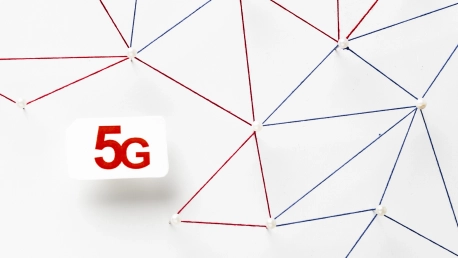As 5G technology emerges, it promises to dramatically transform the Internet of Things (IoT) with its high speeds and enhanced connectivity. This technology leap forward suggests a future where devices communicate more fluidly than ever before. However, this comes with the caveat that the IoT’s security landscape must undergo significant changes to address the new challenges presented by 5G. The increased interconnectivity and data throughput rates require a reimagined approach to cybersecurity that is robust and forward-facing. As we venture into this new era of technology, it’s vital for security measures to adapt quickly, ensuring that IoT ecosystems remain resilient against the potential threats that accompany these cutting-edge advancements. The balance between leveraging the benefits of 5G and safeguarding against its vulnerabilities will be a defining factor in the successful deployment of next-generation IoT systems.
The Groundwork of IoT Security in a 5G World
The synergy between IoT and 5G is set to revolutionize our digital ecosystem. With 5G’s higher bandwidth and ultra-low latency, IoT devices will operate with unparalleled efficiency and precision, ushering in new levels of automation and smart technology utility. However, this enhanced functionality also means that the surface area vulnerable to cyber-attacks expands dramatically. Devices that were once simple and secure now become intricate portals capable of transmitting sophisticated data but also potentially exposing critical systems to infiltration. It is essential that security measures evolve concurrently with these technical advancements, aiming to protect the integrity of burgeoning smart networks and the confidentiality of data traffic that traverses them.
Bridging the Security Gaps in the IoT Landscape
Traditionally, IoT devices have had simplistic security, often only as robust as necessary for the tasks they performed. The transition to 5G demands a reevaluation and fortification of these security protocols. Upgraded encryption standards, capable of withstanding the sheer volume and variety of data that 5G devices will handle, must be developed and implemented. Authentication methods, too, must become more stringent to ensure that the exponential increase in connected devices does not equate to an equivalent rise in vulnerabilities. Manufacturers and software developers play a pivotal role in this landscape. By embedding security into the design phase of IoT products, they can create an ecosystem where security is as integral as functionality, especially under the complex demands of a 5G network.
The Infrastructure Challenge: Scaling Up with Security
The infrastructure needed to uphold a 5G network is fundamentally different from its predecessors. The short-wave frequencies 5G utilizes require a denser array of cells, which complicates the deployment process and introduces multiple new vectors for potential security breaches. Furthermore, 5G’s virtualized network functions open the door for advanced, targeted cyberattacks which can exploit vulnerabilities within the software-defined networking components. Hardening these networks against intrusion is a significant challenge that requires a sophisticated approach to cybersecurity, involving advanced monitoring systems and rapid response capabilities for any threats that arise.
The Economic Equation: Investment vs. Cost Savings
Implementing 5G technology is a significant financial undertaking, and strengthening IoT security in this advanced network environment adds even more to the cost. Businesses are looking at a considerable investment from the outset for equipment and implementation, extending to ongoing surveillance and system upkeep. Despite the upfront costs, investing in 5G and IoT security can be economically beneficial over time. The unified use of hardware, more efficient network operations, and the avoidance of expensive security incidents can help recoup initial costs. It is critical for businesses to adopt a long-term view when assessing the returns on such an investment, recognizing the overarching economic gains that solid IoT security on a 5G network can provide. This broader perspective underscores the necessity of balancing upfront investment against future savings and the strengthened security posture of IoT environments within the evolving 5G landscape.
Toward a Collaborative Approach in Security Standards
Given the complexities and scope of IoT security in a 5G era, no single entity can cover all bases. Cooperation among regulatory agencies, technology providers, and end users is a necessity to forge comprehensive IoT security standards. Cross-industry alliances need to be strengthened and initiatives encouraged to share knowledge, tools, and best practices. By cultivating an environment of collaborative security, collective expertise can help secure IoT infrastructure against emerging threats facilitated by 5G capabilities.
The Future Outlook: R&D and Innovative Security Strategies
The rapid advancement of 5G and IoT technologies necessitates a dynamic security strategy underscored by ongoing R&D. As these networks expand, specialized security frameworks tailored to 5G IoT infrastructures are essential. AI and machine learning will likely be at the forefront of these security measures, providing intelligent, autonomous systems capable of identifying and neutralizing complex cyber threats. The objective is not merely to counter existing vulnerabilities but to forecast and preempt potential security breaches. Anticipatory security mechanisms will be vital in safeguarding against the heightened risks associated with cutting-edge 5G and IoT applications, ensuring robust defense measures that evolve in tandem with emerging technological landscapes. This proactive security mindset is critical to protecting the interconnected digital ecosystem of the future.









